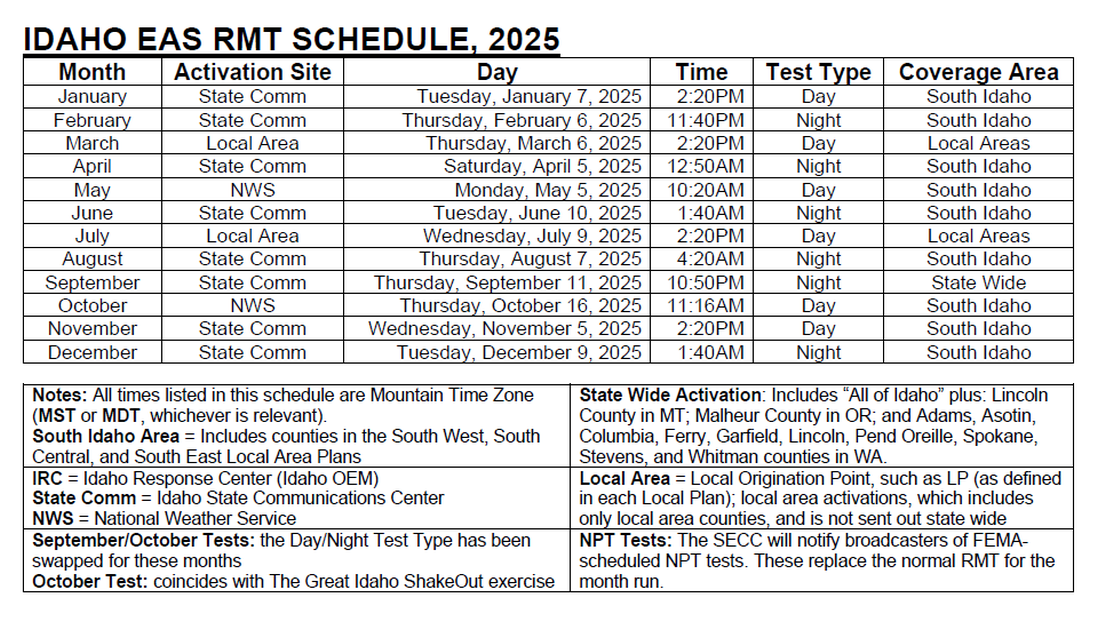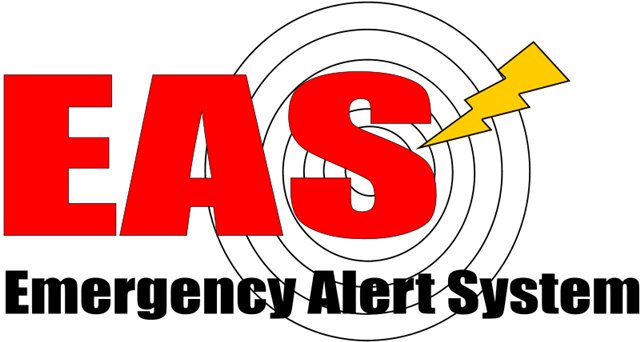Idaho EAS / RMT Schedule
Here is the EAS / RMT Schedule for 2025

Here is the EAS / RMT Schedule for 2025

 The Emergency Alert System provides quick, actionable warnings to the general public via Radio and Television broadcast stations as well as cable companies. Federal law requires broadcasters and cable companies to have the necessary equipment installed for delivering presidential (national) alerts. Fortunately, we have never had a need for such an alert.
The Emergency Alert System provides quick, actionable warnings to the general public via Radio and Television broadcast stations as well as cable companies. Federal law requires broadcasters and cable companies to have the necessary equipment installed for delivering presidential (national) alerts. Fortunately, we have never had a need for such an alert.
As a public service, however, broadcasters and cable companies routinely and voluntarily provide the public with other warnings such as Amber Alerts and NOAA Weather warnings. These warnings can save lives and property. Within a matter of minutes, emergency management personnel (state and local) as well as NOAA Weather can use EAS to notify thousands of Idaho Citizens of impending danger or abducted children.
Tthe Emergency alert System’s purpose is to provide emergency management a means to get ACTIONABLE information to the general public QUICKLY about public safety issues. With a single phone call (typically to the State Communications Center), an alert can be distributed within minutes to all members of the public residing in the affecting area who are watching TV or listening to radio, as well as many cell phone users..
It is important to realize that EAS is NOT a substitute for other means of communicating to the public. EAS is meant to provide a QUICK initial warning to the public. The technology limits the voice message to approximately 90 seconds, so clearly EAS can’t be used for providing in depth coverage. For that, your Media Relations departments can contact the news media via traditional means for expanded coverage.
Read more: About Your SECC & LECC